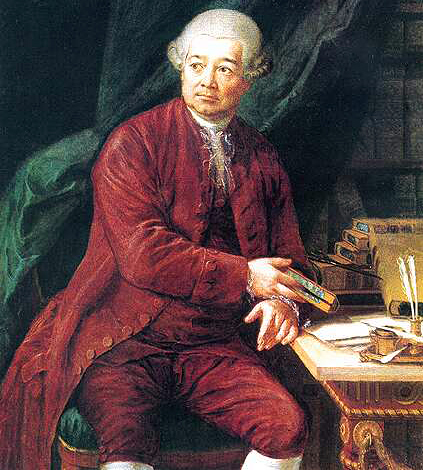|
Ankopaaingyadete
Ankopaaingyadete (d. early 1900s), commonly called Anko or In The Middle Of Many Tracks, was a Kiowa artist and historian known for his pictographic winter count calendars. A seasonal calendar, originally created on brown wrapping paper, covered the time from winter 1863 to spring 1885. Another, a monthly record made with pencil in a ledger notebook, shows 39 months in the late 1880s and early 1890s. Anko made several copies of his calendars on buckskin, including one with colored inks for ethnologist James Mooney. On this copy for Mooney, Anko combined his yearly and monthly calendars onto one piece. The original monthly calendar was depicted in blank ink in a continuous spiral. On the original and in the copies, the months are marked with crescent moons, symbols representing each moon's name (such as "Geese-going Moon" for October). Many of the events Anko recorded at this time chronicle the illness of his young wife, who was home with tuberculosis. One of these buckskin cale ... [...More Info...] [...Related Items...] OR: [Wikipedia] [Google] [Baidu] |
Kiowa
Kiowa ( ) or Cáuigú () people are a Native Americans in the United States, Native American tribe and an Indigenous people of the Great Plains of the United States. They migrated southward from western Montana into the Rocky Mountains in Colorado in the 17th and 18th centuriesPritzker 326 and eventually into the Southern Plains by the early 19th century. In 1867, the Kiowa were moved to a Indian reservation, reservation in Southwestern Oklahoma. Today, they are Federally recognized tribe, federally recognized as Kiowa Indian Tribe of Oklahoma with headquarters in Carnegie, Oklahoma. , there were 12,000 citizens. The Kiowa language, Kiowa language (Cáuijògà), part of the Tanoan languages, Tanoan language family, is in danger of extinction, with only 20 speakers as of 2012."Kiowa Tanoan" ''Ethnologue.'' Retrieved 21 June 2012. ... [...More Info...] [...Related Items...] OR: [Wikipedia] [Google] [Baidu] |
Winter Count
Winter counts (Lakota: ''waníyetu wówapi'' or ''waníyetu iyáwapi'') are pictorial calendars or histories in which tribal records and events were recorded by Native Americans in North America. The Blackfeet, Mandan, Kiowa, Lakota, and other Plains tribes used winter counts extensively. There are approximately one hundred winter counts in existence, many of which are duplicates. Description 340px, A copy of the winter count kept by Yanktonai Sioux Lone Dog Winter counts are pictographic calendars, traditionally painted on bison hides, which display a sequence of years by depicting their most remarkable events. The term winter count itself comes from the Lakota name ''waniyetu wowapi'', ‘waniyetu’ translating to ‘winter’ while ‘wowapi’ refers to “anything that is marked and can be read or counted.” Most winter counts have a single pictograph symbolizing each year, based on the most memorable event of that year. For Lakota people, years ran from first snowfall ... [...More Info...] [...Related Items...] OR: [Wikipedia] [Google] [Baidu] |
Anko Kiowa Calendar in Canada
{{disambig ...
Anko may refer to: People * , Japanese emperor * , father of modern karate *, karate master and contemporary of Itosu * Ankopaaingyadete (Anko), 19th-century Kiowa calendar artist Fictional characters * , in the ''Naruto'' series * , in the manga/anime '' Great Teacher Onizuka'' * , in the anime '' Tamako Market'' * / , in the manga/anime '' My Deer Friend Nokotan'' * King Anko, a sea serpent in the children's fantasy novel '' The Sea Fairies'' (1911) by L. Frank Baum Other * Anglerfish, in Japanese * Red bean paste, called Anko (餡こ or 小豆)) in Japanese * Anko, in-house brand name of retail chain Kmart in Australia and Zellers Zellers was a Canadian discount store chain founded by Walter P. Zeller in 1931. It was acquired by the Hudson's Bay Company (HBC) in 1978, and after a series of acquisitions and expansions, peaked with 350 locations in 1999. However, fierce ... [...More Info...] [...Related Items...] OR: [Wikipedia] [Google] [Baidu] |
Winter Count
Winter counts (Lakota: ''waníyetu wówapi'' or ''waníyetu iyáwapi'') are pictorial calendars or histories in which tribal records and events were recorded by Native Americans in North America. The Blackfeet, Mandan, Kiowa, Lakota, and other Plains tribes used winter counts extensively. There are approximately one hundred winter counts in existence, many of which are duplicates. Description 340px, A copy of the winter count kept by Yanktonai Sioux Lone Dog Winter counts are pictographic calendars, traditionally painted on bison hides, which display a sequence of years by depicting their most remarkable events. The term winter count itself comes from the Lakota name ''waniyetu wowapi'', ‘waniyetu’ translating to ‘winter’ while ‘wowapi’ refers to “anything that is marked and can be read or counted.” Most winter counts have a single pictograph symbolizing each year, based on the most memorable event of that year. For Lakota people, years ran from first snowfall ... [...More Info...] [...Related Items...] OR: [Wikipedia] [Google] [Baidu] |
James Mooney
James Mooney (February 10, 1861 – December 22, 1921) was an American ethnographer who lived for several years among the Cherokee. Known as "The Indian Man", he conducted major studies of Southeastern Indians, as well as of tribes on the Great Plains. "Register to the Papers of James Mooney" , National Anthropological Archives, Smithsonian Institution, accessed 10 Nov 2009 He did ethnographic studies of the Ghost Dance, a spiritual movement among various Native American culture groups, after |
Kiowa Painters
Kiowa ( ) or Cáuigú () people are a Native American tribe and an Indigenous people of the Great Plains of the United States. They migrated southward from western Montana into the Rocky Mountains in Colorado in the 17th and 18th centuriesPritzker 326 and eventually into the Southern Plains by the early 19th century. In 1867, the Kiowa were moved to a reservation in Southwestern Oklahoma. Today, they are federally recognized as Kiowa Indian Tribe of Oklahoma with headquarters in Carnegie, Oklahoma. , there were 12,000 citizens. The Kiowa language (Cáuijògà), part of the Tanoan language family, is in danger of extinction, with only 20 speakers as of 2012."Kiowa Tanoan" ''Ethnologue.'' Retrieved 21 June 2012. the Kiowa have a Kiowa Language Department. The University of Tulsa, the University of Oklahoma in Norman, ... [...More Info...] [...Related Items...] OR: [Wikipedia] [Google] [Baidu] |
Kiowa People
Kiowa ( ) or Cáuigú () people are a Native Americans in the United States, Native American tribe and an Indigenous people of the Great Plains of the United States. They migrated southward from western Montana into the Rocky Mountains in Colorado in the 17th and 18th centuriesPritzker 326 and eventually into the Southern Plains by the early 19th century. In 1867, the Kiowa were moved to a Indian reservation, reservation in Southwestern Oklahoma. Today, they are Federally recognized tribe, federally recognized as Kiowa Indian Tribe of Oklahoma with headquarters in Carnegie, Oklahoma. , there were 12,000 citizens. The Kiowa language, Kiowa language (Cáuijògà), part of the Tanoan languages, Tanoan language family, is in danger of extinction, with only 20 speakers as of 2012."Kiowa Tanoan" ''Ethnologue.'' Retrieved 21 June 2012. ... [...More Info...] [...Related Items...] OR: [Wikipedia] [Google] [Baidu] |
Historian
A historian is a person who studies and writes about the past and is regarded as an authority on it. Historians are concerned with the continuous, methodical narrative and research of past events as relating to the human species; as well as the study of all history in time. Some historians are recognized by publications or training and experience.Herman, A. M. (1998). Occupational outlook handbook: 1998–99 edition. Indianapolis: JIST Works. Page 525. "Historian" became a professional occupation in the late nineteenth century as research universities were emerging in Germany and elsewhere. Objectivity Among historians Ancient historians In the 19th century, scholars used to study ancient Greek and Roman historians to see how generally reliable they were. In recent decades, however, scholars have focused more on the constructions, genres, and meanings that ancient historians sought to convey to their audiences. History is always written with contemporary concerns and ancient hist ... [...More Info...] [...Related Items...] OR: [Wikipedia] [Google] [Baidu] |
Pictogram
A pictogram (also pictogramme, pictograph, or simply picto) is a graphical symbol that conveys meaning through its visual resemblance to a physical object. Pictograms are used in systems of writing and visual communication. A pictography is a writing system which uses pictograms. Some pictograms, such as GHS hazard pictograms, hazard pictograms, may be elements of formal languages. In the field of prehistoric art, the term "pictograph" has a different definition, and specifically refers to art painted on rock surfaces. Pictographs are contrasted with petroglyphs, which are carved or incised. Small pictograms displayed on a computer screen in order to help the user navigate are called ''Icon (computing), icons''. Historical Early written symbols were based on pictograms (pictures which resemble what they signify) and ideograms (symbols which represent ideas). Ancient Sumerian, Egyptian, and Chinese civilizations began to adapt such symbols to represent concepts, developing them i ... [...More Info...] [...Related Items...] OR: [Wikipedia] [Google] [Baidu] |
Buckskin (leather)
Buckskin is the soft, pliable, porous preserved hide of an animal – usually deer – tanned in the same way as deerskin clothing worn by Native Americans. Some leather sold as "buckskin" may now be sheepskin tanned with modern chromate tanning chemicals and dyed to resemble real buckskin. Traditionally, Native American Indians would scrape away the excessive fat clinging to the hide, and this would be followed by working the raw hide with the brain tissue of an animal. Afterwards, the raw hide is made to envelope a fire that emits wood smoke, and where the smoke is mostly trapped inside the raw hide for many hours. The combined application of brain tissue and smoke produces soft and pliable buckskin leather, with a dark honey color. This treatment differs from the traditional tanning methods used in other societies and cultures and is thought to be preferable to vegetable tanning methods where tannins are exclusively used. The finished product resembles chamois leather, but ... [...More Info...] [...Related Items...] OR: [Wikipedia] [Google] [Baidu] |
Ethnology
Ethnology (from the , meaning 'nation') is an academic field and discipline that compares and analyzes the characteristics of different peoples and the relationships between them (compare cultural, social, or sociocultural anthropology). Scientific discipline Compared to ethnography, the study of single groups through direct contact with the culture, ethnology takes the research that ethnographers have compiled and then compares and contrasts different cultures. The term ''ethnologia'' (''ethnology'') is credited to Adam Franz Kollár (1718–1783) who used and defined it in his ''Historiae ivrisqve pvblici Regni Vngariae amoenitates'' published in Vienna in 1783. as: "the science of nations and peoples, or, that study of learned men in which they inquire into the origins, languages, customs, and institutions of various nations, and finally into the fatherland and ancient seats, in order to be able better to judge the nations and peoples in their own times." Kollár's int ... [...More Info...] [...Related Items...] OR: [Wikipedia] [Google] [Baidu] |
National Museum Of Natural History
The National Museum of Natural History (NMNH) is a natural history museum administered by the Smithsonian Institution, located on the National Mall in Washington, D.C., United States. It has free admission and is open 364 days a year. With 4.4 million visitors in 2023, it was the List of most-visited museums in the United States, third most-visited museum in the United States. Opened in 1910, the museum on the National Mall was one of the first Smithsonian buildings constructed exclusively to hold the national collections and research facilities. The main building has an overall area of with of exhibition and public space and houses over 1,000 employees. The museum's collections contain over 146 million specimens of plants, animals, fossils, minerals, rock (geology), rocks, meteorites, human remains, and human cultural artifacts, the largest natural history collection in the world. It is also home to about 185 professional natural history scientists—the largest grou ... [...More Info...] [...Related Items...] OR: [Wikipedia] [Google] [Baidu] |







